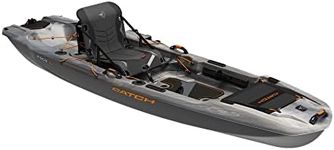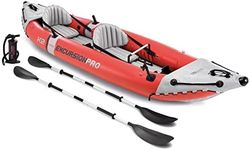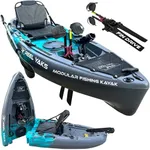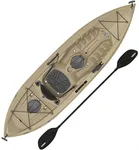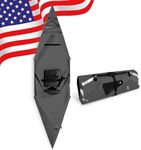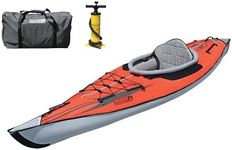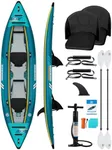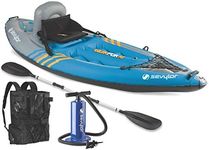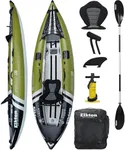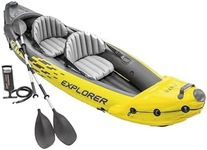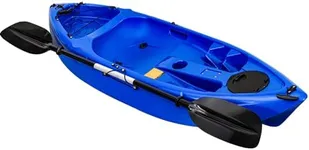Buying Guide for the Best Cheap Kayak
Choosing the right kayak can greatly enhance your paddling experience, whether you're a beginner or an experienced kayaker. When selecting a kayak, it's important to consider various specifications that will affect its performance, comfort, and suitability for your intended use. By understanding these key specs, you can make an informed decision and find the best kayak for your needs.Type of KayakKayaks come in different types, such as recreational, touring, whitewater, and fishing kayaks. The type of kayak you choose should align with your intended use. Recreational kayaks are great for calm waters and casual paddling, touring kayaks are designed for longer trips and open water, whitewater kayaks are built for navigating rapids, and fishing kayaks come with features tailored for anglers. Consider where and how you plan to use the kayak to determine the best type for you.
LengthThe length of a kayak affects its speed, stability, and maneuverability. Shorter kayaks (under 10 feet) are more maneuverable and easier to transport, making them ideal for beginners and those paddling in tight spaces. Medium-length kayaks (10-14 feet) offer a balance of speed and stability, suitable for recreational use and light touring. Longer kayaks (over 14 feet) are faster and track better, making them ideal for long-distance paddling and open water. Choose a length based on your paddling environment and experience level.
WidthThe width of a kayak, also known as its beam, influences its stability and speed. Wider kayaks (over 30 inches) are more stable and suitable for beginners or activities like fishing, where stability is crucial. Narrower kayaks (under 28 inches) are faster and more efficient in the water, making them better for experienced paddlers and long-distance trips. Consider your balance and comfort level when choosing the width of your kayak.
Weight CapacityWeight capacity refers to the maximum weight a kayak can safely carry, including the paddler and any gear. It's important to choose a kayak with a weight capacity that exceeds your body weight and the weight of your equipment to ensure safe and efficient paddling. Overloading a kayak can affect its performance and stability. Estimate the total weight you plan to carry and select a kayak with an appropriate weight capacity.
MaterialKayaks are made from various materials, each with its own advantages. Polyethylene plastic is durable and affordable, making it a popular choice for recreational kayaks. Composite materials like fiberglass and carbon fiber are lighter and offer better performance but are more expensive. Inflatable kayaks are portable and easy to store but may not be as durable as hard-shell kayaks. Consider the material based on your budget, performance needs, and storage options.
Cockpit SizeThe size of the cockpit affects your comfort and ease of entry and exit. Larger cockpits provide more room and are easier to get in and out of, making them suitable for beginners and recreational paddlers. Smaller cockpits offer better control and protection from the elements, which is beneficial for more experienced paddlers and those in rougher waters. Choose a cockpit size that matches your comfort level and paddling style.
Storage OptionsStorage options in a kayak include hatches, bungee cords, and compartments for carrying gear. If you plan on taking longer trips or need to carry a lot of equipment, look for kayaks with ample storage space. Recreational kayaks may have limited storage, while touring and fishing kayaks often come with multiple storage options. Consider your storage needs based on the type of paddling you plan to do.
